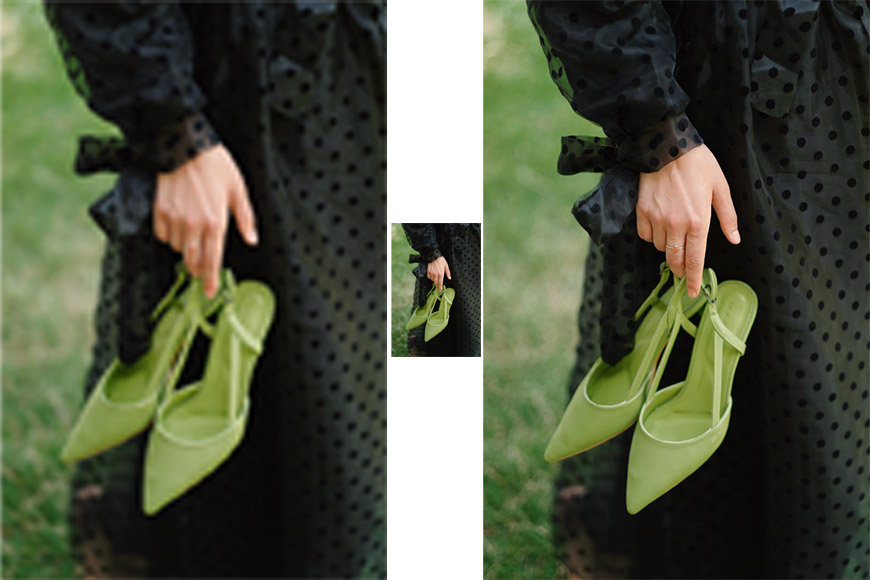
How to Use Photoshop Smart Objects in 2023: Create, Edit & Fix
Learn how and why to use smart objects in Photoshop, including step-by-step instructions. Plus, tips, tricks & troubleshooting common problems.
By Ana Mireles
Learning how and why to use smart objects in Photoshop is important for photographers and designers.
Most people know that smart objects help you to work non-destructively. However, not everyone knows they’re also helpful for editing and managing multiple layers in a single Photoshop document and even numerous files that share the same element.
In this article, you’ll learn how to add a new smart object, convert existing layers into smart objects, apply filters, and much more.
More importantly, you’ll learn about the benefits and limitations of using smart objects. So, load up Photoshop and let’s get started.


Download the latest version of Adobe Photoshop to follow along with this simple tutorial.
Start a free 7-day trial today
What Are Smart Objects in Photoshop?

Photoshop smart objects are layers that preserve the original image data. Because of this, they allow you to perform non-destructive editing.
Any filters that you apply to a smart object become a smart filter. This means you can open and adjust it anytime – even if you’ve closed Photoshop and re-opened it.
The same thing applies to any edits, which is why some destructive editing is not enabled. We’ll talk more about this further on in the article.
Any layer can be converted into a smart object, and any smart object can be converted into a regular layer. You can also combine multiple layers into one smart object (if you decide to convert them back, they’ll get released as a layer group).
What are the types of smart objects in Photoshop?
Photoshop smart objects can be categorized into two types: embedded smart objects and linked smart objects. You can decide which one you want from the moment you create them, but you can also convert them at any time.
- Embedded Smart Object – This is the most common type. It has all the characteristics of the smart object and retains the data from the original file – but it’s not connected to it. This means that once it’s placed in Photoshop, you can change or even throw away the original file, and it won’t affect your Photoshop file. The same happens the other way around: whatever you do to the smart object in Photoshop, it won’t change anything in the file.
- Linked Smart Object – A linked smart object, contrary to the embedded one, maintains a connection with the original file. Let’s say you add a color image to your new artwork as a linked smart object. Then, you open the original file and change it to black and white. If you go back to your artwork, the linked smart object will now appear black and white – even if you didn’t do the edit in this file. This is useful when you work with multiple files that share linked smart objects. You can simply edit the original source, and all the smart objects will update automatically.
When to use smart objects in Photoshop
You should use smart objects in Photoshop when you intend to perform multiple edits that need to be adjusted as you go along.
Another use for linked smart objects is when you have multiple images that share a common element that could be edited at some point. For example, a watermark or logo.
Imagine that you add a watermark to all your artworks, but at some point, you change its design. Using linked smart objects, all of them will automatically update.
In general, you should also use smart objects whenever you want to keep the original data on your layer intact.
How Do You Create a Smart Object in Photoshop?
There are different methods to create smart objects in Photoshop.
Method 1 – Convert to smart object
As I mentioned earlier, you can turn any layer into a smart object.
Simply open the Layers panel and right-click on the layer you want to convert. Then, choose Convert to Smart Object from the pop-up menu. You’ll notice that a small icon appears in the thumbnail – that’s how you can recognize a smart object.
You can also do this by going to the menu Layer > Smart Objects > Convert to Smart Object.
If you want to convert multiple layers or even all the layers into a single smart object, you have to select them and then follow the same process as if you were converting a single layer.
Method 2 – Add a smart filter
Smart filters are regular filters applied to a smart object. So, if you have a regular layer and go to the Filter menu, you’ll find the option to Convert for Smart Filters.
Once you click that, the layer will turn into a smart object, and every filter you apply will be a smart filter.
From now on, you can apply filters as non-destructive editing, and you can edit filters as many times as you want.
Method 3 – Place
If you want to import an image as a smart object you can use the Place command.
With an open document, go to the menu bar and click File > Place Embedded or Place Linked, depending on if you want to work with embedded or linked smart objects.
If you’re working with Photoshop CS6, you’ll only have the option Place, and it will create an embedded smart object.
Method 4 – Open as object
If you’re working with a raw file, it will first open in Adobe Camera Raw. Here you can do all or part of your editing.
Once you’re ready to move on to Photoshop, press the Shift key, and you’ll notice that the Open button becomes Open as Object.
When you click on it, the photo will open in Photoshop as a smart object instead of a locked background layer as it would by default.
Method 5 – Drag Adobe Illustrator files
When you drag a layer or an object from Adobe Illustrator, it will create a smart object in Photoshop. This also works if you drag a PDF into Photoshop.
Method 6 – Paste an Adobe Illustrator file
You’ll get a dialogue box if you paste an Adobe file from Illustrator into a Photoshop document. Here, choose Smart Object and paste it.
What Are the Benefits of Photoshop Smart Objects for Photographers?
1. Non-destructive transformations

On the left, you can see the result of shrinking and enlarging a regular layer. On the right, you see what happens if it’s a smart object. | Photo credit: Nida
When you work with regular layers, any transformation – like shrinking your image – discards the pixel data that is no longer needed. If you need to enlarge the image again, you’ll lose image quality (see the left image in the above example).
Instead, a smart object keeps the original data, so you can shrink and enlarge your layer as much as you want and still have all the pixels to work with (as per the right image in the above example).
2. Smart filters

Photo credit: Asad Photo Maldives
When you apply a filter to a layer, the change is final. If you don’t like it or change your mind, you need to go back to your history log or delete the layer and start over.
This isn’t so much of a problem if you do it immediately. However, if you need to adjust the filter after doing other edits, you lose time and work.
Instead, when working on a smart object, filters automatically become smart filters. This means that you can go back to edit them at any time.
Once you apply a smart filter, it will appear on your layer indented under its name. So, whenever you want to adjust a smart filter, go to the Layers panel and double-click on the filter to open its panel and make the necessary changes.
3. Image averaging
Image averaging is a technique that allows you to reduce the amount of noise in your photo by merging several versions of it.
To do this in Photoshop, you need to create a new smart object that contains all the layers. Then go to Layers > Smart Objects > Stack Mode > Mean.
4. Import vector works without rasterizing
If you’re importing vector files – like the ones generated by Illustrator – you can keep them as vectors instead of pixels by importing them as smart objects.
5. Multiple file editing with linked smart objects
If you have different documents that share a common element – for example, a logo that needs to go on flyers, business cards, web pages, etc. – you can save that element as a linked smart object.
This way, if you ever need to change it, you only have to change it in the source file and all the other documents will be automatically updated.
What are the Disadvantages of Smart Objects in Photoshop?
Smart objects are usually very helpful, but they do have downsides.
The first one is that they occupy a lot of space because they keep all their original data. This means that Photoshop may run slower if your computer isn’t very powerful and you have multiple smart objects active.
Also, a Photoshop file containing smart objects will take up a lot of storage space on your hard drive.
Another disadvantage of smart objects is that not all edits are available. Since smart objects preserve the original information, they don’t allow you to do destructive edits on them.
There are ways around this, of course. You can edit them separately – where they are raster or vector images – but it’s a bit more hassle than doing it in the same Photoshop document where you’re working, as you do with other types of layers.
How to Fix: Smart Object is Not Directly Editable
If you’ve ever seen the “Could not complete your request because the smart object is not directly editable” error in Photoshop, this is how to fix it.
Usually, this message comes up when you’re trying to edit a smart object that’s locked. First, open the Layers panel and verify if this is the case. You’ll know when a smart object is locked because it has a lock icon on the layer’s right side.
If so, you simply need to click on the lock icon on the layer or select the layer and click on the lock icon you’ll find on top of the layers in the Lock menu.
How to Fix: Smart Object Must be Rasterized First
If you’ve ever seen the “Smart object must be rasterized before proceeding” error, this is how to fix it.
As mentioned before, smart objects are non-destructive tools. This has the disadvantage that you can’t use some of the editing features available in the latest version of Adobe Photoshop. When you try to use them, you’ll get a message saying that the smart object must be rasterized.
The way to fix this is different depending on whether you want to keep it a smart object or not. This is because rasterizing means the smart object layer becomes a regular layer.
You can simply rasterize the layer if you don’t want to keep the smart object. To do so, you can click OK on the error message that tells you that it must be rasterized before proceeding.
Alternatively, you can go to the menu Layers > Smart Objects > Rasterize or simply right-click on the smart object layer and click on the Rasterize Layer command.
However, keeping the layer as a smart object means you can make edits in the original image. To do this, you can go to the menu Layers > Smart Objects> Edit Contents. You can also go to Properties > Edit Contents or simply double-click on the smart object thumbnail on the Layers panel.
This will open the original image in a separate tab (remember to double-check the tab’s name to ensure that you’re working on the right one). Here you can use the brush tool and any other Photoshop feature feature because you’re working with regular layers. Save the changes by going to File > Save or using the shortcut Cmd or Ctrl + S.
Keep in mind that doing this is no longer non-destructive editing. If you double-click the smart object again, you won’t be able to undo the edits – you would have to add the smart object again and start over.
- See also: How to raterize an image in Photoshop?
Smart Objects Photoshop FAQs
What’s the difference between smart objects and smart filters?
Smart objects are a type of layer that preserves the original information, while smart filters are the same filters you can apply to any layer, except that you can go back to edit them at any time. So, smart filters are the filters that you apply to a smart object.
How do I unlock a smart object in Photoshop?
If you see a lock icon on the right of the smart object layer, you won’t be able to edit it. To unlock it, ensure the layer is selected, then click on the lock icon on the Lock option at the top of the layers in the panel.
How do I convert a smart object to a regular layer?
If you want to turn a smart object layer into a regular layer where you can apply all types of edits, you need to rasterize it. To do so, right-click on the smart object layer and scroll the menu until you find the option Rasterize Layer. You’ll notice that the smart object icon disappears from the layer’s thumbnail.
How do you remove a smart object from a layer?
To deactivate a smart object you can rasterize the layer – as explained in the previous answer. Alternatively, you can use the command Convert to Layers. You’ll find it in the menu when you right-click a smart object, but it’s only present in Photoshop CC 2020 and later.
How to Create Smart Objects: Final Words
I hope this article helped you to understand how to use smart objects in Photoshop. They can be one of the most valuable tools for non-destructive editing, but they do have limitations.
If you have any other questions about how or when to use them, post them in the comments section and we’ll do our best to help out.


Download the latest version of Adobe Photoshop to follow along with this simple tutorial.
Start a free 7-day trial today














